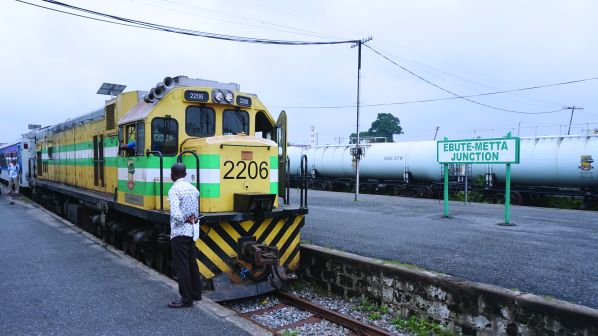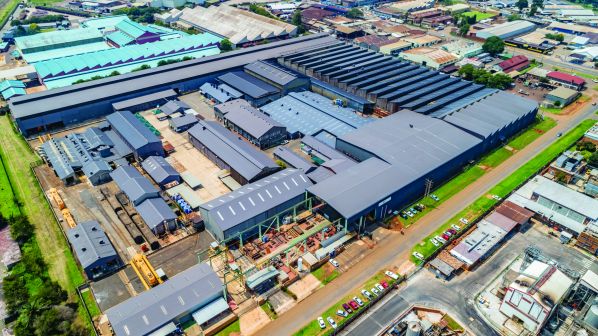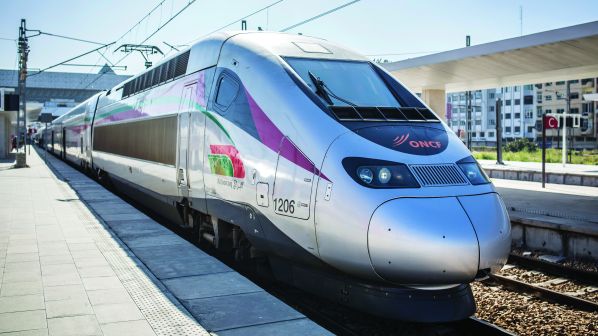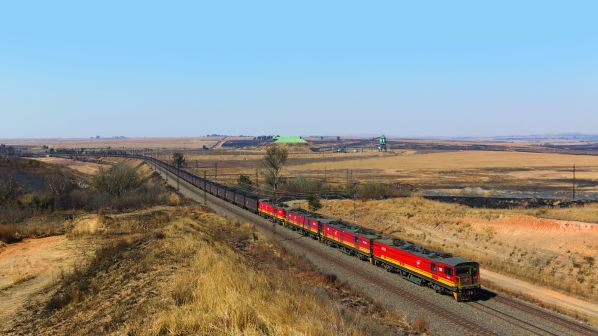AS the world’s second largest continent, the list of transport challenges facing Africa is long. Often it is easier to fly via a European capital than flying direct between African capitals. Transport costs are also among the highest in the world, which increases the cost of trade and makes products uncompetitive on international markets; transporting a car from Japan to Abidjan costs $US 1500, inclusive of insurance costs, while the same operation across Africa from Addis Ababa to Abidjan costs $US 5000.
According to the Programme for Infrastructure Development in Africa (PIDA), developed by the African Union (AU), African Development Bank Group (ADBG), and New Partnership for Africa’s Development (Nepad), and published by the African Union Development Agency (Auda-Nepad), connecting Africa through infrastructure is integral to improving economies across the continent. Only 16.6% of total exports from Africa are with neighbouring countries, with intra-African commerce beset by many challenges including logistical and trade barriers.
The start of trading under the African Continental Free Trade Area (AfCFTA) on January 1 2021 is expected to redefine intra-African trade as it creates the largest single market on the globe, says Auda-Nepad CEO, Dr Ibrahim Assane Mayaki, in the foreword to the PIDA Progress Report 2019-20.
“However, there are fundamental aspects that must be in place to enable this to happen,” Mayaki says. “One key component is the requisite infrastructure. Therefore, developing robust infrastructure is crucial to operationalisation and success of the AfCFTA.”
Rail, with its ability to carry large numbers of passengers and high quantities of freight over long distances in a cost effective and sustainable manner, is set to play a large role. However, the sector faces numerous challenges that must be overcome for it to achieve its potential.
There have been some major success stories for rail in Africa in recent years. South African freight operator Transnet operates some of the largest freight trains in the world, setting a new world record in October 2019 when it ran a 375-wagon manganese train on the 861km Sishen - Saldanha heavy-haul line. Lengthening the train from 312 to 375 wagons allowed Transnet to increase the payload of its manganese trains from 19,656 tonnes to 23,625 tonnes to cope with demand.
In November 2018, King Mohammed VI of Morocco and French president, Mr Emmanuel Macron, inaugurated Africa’s first high-speed line, which runs from from Tangiers to Kenitra. Construction of the 183km line was officially launched in September 2011. Dynamic testing began in February 2017 and an African rail speed record of 357km/h was set on May 4 2018.
Morocco has since proposed constructing two new high-speed lines, connecting Kenitra with Marrakech and Marrakech with Agadir.
The railways have been deteriorating over the years, and I think maintenance has not been done well, most likely because of railways not having money to carry out the necessary maintenance.
Ms Mesela Nhlapo, CEO of the African Rail Industry Association (ARIA)
Along the Mediterranean coast, Algeria and Egypt are investing heavily in their standard-gauge networks. Libya started to build its first lines to plug the gap between Tunisia and Egypt, but this ended abruptly following the overthrow of the Gaddafi regime and the outbreak of civil war.
Other networks on the continent generally fall into one of two categories: lines built during the colonial era, many of which now require substantial maintenance or are in desperate need of upgrading, or Standard Gauge Railways (SGR), which are being built to better connect landlocked economies with coastal ports and to improve internal freight and passenger connections.
“The railways have been deteriorating over the years, and I think maintenance has not been done well, most likely because of railways not having money to carry out the necessary maintenance,” says Ms Mesela Nhlapo, CEO of the African Rail Industry Association (ARIA). Formerly the Railroad Association of South Africa (RRA), ARIA rebranded in February as it looks to play a greater role in revitalising the local and continental rail sector and to support the new AfCFTA.

a network of standard-gauge lines. Photo: Shutterstock/Atfie SahidMY
The director of the International Union of Railways (UIC), Mr François Davenne, says many African countries and the AU are looking to use rail as the backbone for mobility, something he says is achievable for three reasons.
First, there is a growing political will behind rail. “They really want to have these backbones, they have the plans, they want to connect the countries,” he says.
Secondly, Davenne points out that existing networks in Africa were largely built to carry exports from the interior to the coast, instead of being designed to carry passengers. This opens opportunities to rethink the development of new lines and networks to best benefit passengers.
Finally, Davenne says there is an opportunity for African railways to build on research and development already undertaken in other parts of the world.
“They have the possibility to innovate,” he says. “For example, when you are speaking about what kind of electrification to install, perhaps they can be more innovative than what we have been doing in Europe. When coming to the question of control, command and automation, they can perhaps use more satellite-based solutions.”
He also points out the prospect, as is seen in Morocco, to use the construction of new lines to install other infrastructure such as fibre-optic cables, providing further benefits.
Financing
From speaking to many people in the African rail sector, funding is consistently raised as the major barrier to both maintaining existing networks and building new lines. But the recurring question of how this can be overcome has yet to be comprehensively answered. Funding is becoming available from overseas sources, but this does not cover the full amount required.
China and Europe in particular are vying to support projects in Africa, and this diplomatic competition could be good for the continent.
Of the €5bn of Official Development Assistance (ODA) provided by European countries for major infrastructure in Africa in 2018-19, about €620m went to rail transport.
China has placed an emphasis on including the continent in its Belt and Road Initiative launched in 2013, which aims to connect China with emerging economies through a vast network of sea, rail and road and other infrastructure projects. China often provides the funding for the projects in return for the contract being awarded to Chinese contractors.
There are competing views as to the overall goals of the initiative, with the United States and other western countries accusing China of using “debt-trap diplomacy” in developing countries while also expanding its influence through soft diplomacy. However, others such as the China Africa Research Initiative (CARI) at Johns Hopkins University say there is no evidence China aims to deliberately push poor countries into debt as a way of seizing their assets or gaining a greater say in their internal affairs.
Regardless, countries in the G7 - Britain, the United States, Germany, France, Italy, Canada and Japan - announced the creation of the Build Back Better World (B3W) partnership to counter Belt and Road following the G7 summit in Cornwall, Britain, in June. Specifics of the B3W partnership are still hazy, but the White House said in a statement following the summit that it will be “a values-driven, high-standard, and transparent infrastructure partnership led by major democracies to help narrow the $US 40 trillion infrastructure gap needed in the developing world, which has been exacerbated by the Covid-19 pandemic.”
This could potentially be significant for Africa, with the African Railway Roundtable tweeting that “Africans will particularly be watching how it will unfold.”
It is difficult to measure just how much Belt and Road funding has been spent on rail in Africa. Data collated by CARI found that $US 30.928bn had been allocated to transport projects on the continent since 2013, with rail featuring heavily.
But some countries who were initially keen to take China’s funding are beginning to see problems. Last month, the Nigerian government announced it will retake the initiative with its SGR project by allocating funds to cover the cost of the Kano - Kaduna section following delays by the Export-Import Bank (Exim) of China to approve a $US 5.3bn loan for the project that has been pending for close to two years.
Transport minister, Mr Rotimi Amaechi, says the country had opted to turn to the government budget to commence construction of the section in June. The line is budgeted at $US 3bn and the government will fund a third of this cost this year with construction set to be carried out by China Civil Engineering Construction Corporation (CCECC).
The full 2733km Lagos - Kano project, which is budgeted at $US 11.3bn, will connect the Port of Lagos with the interior of the country, running parallel to the existing 1067mm-gauge line. Construction is taking place in segments under the 25-year rail development master plan and Amaechi says the line will not make economic sense unless the entire project is implemented.
Kenya has also run into trouble with its Chinese-funded SGR. In November, the High Court dealt Kenya Railways Corporation’s (KRC) rail freight business a major blow after quashing an earlier government directive requiring the transport of all imported containers on the 578.8km SGR between Mombasa and Nairobi, to support the repayment of the loan required to build the line. The $US 3.8bn line, which opened in 2017, was constructed by China Road and Bridge Corporation with 90% financing from China.
Other opportunities to fund rail infrastructure development on the continent are being explored, such as public-private partnerships (PPPs). For example, Transmashholding (TMH), Russia, is looking to support countries by arranging loans backed by Russian banks, says managing director of TMH Africa, Mr Jerome Boyet.
Major projects planned
Despite these challenges, countries are still pushing ahead with major development plans for their networks. Angola, the Democratic Republic of the Congo, Namibia and Botswana are all developing new rail schemes, subject to finding the necessary funding.
Kenya plans to spend Shillings 32bn ($US 297.2m) through the National Treasury’s 2021-22 budget to upgrade its railway network, as the country looks to attract more passengers and freight to rail.
Shillings 27.2bn has been allocated to the Nairobi - Naivasha SGR, with the remainder allocated to upgrade the country’s metre gauge railway (MGR) network. This includes Shillings 2bn for the line from Longonot to the Naivasha Inland Container Depot (ICD), which connects the Nairobi - Naivasha SGR and the MGR network, and the restoration of the Longonot - Malaba line. Shillings 700m has been allocated for the rehabilitation of the Nakuru - Kisumu MGR line.
Construction of Ghana’s 83.5km Kumasi - Obuasi SGR is due to begin eight months after groundbreaking, after authorities announced plans in June to forcefully evict land encroachers who have built illegal structures on the right of way. The line from Adum, Kumasi, via Kaase and Eduadin to Obuasi is part of a $US 2bn SGR network, itself part of Ghana’s six-stage railway master plan to revitalise the country’s existing 953km 1067mm-gauge network and expand it to more than 4000km over the next 25 years.
In Nigeria, the president, Mr Muhammadu Buhari, launched commercial operation on the 157km Lagos - Ibadan SGR on June 10, after construction began in March 2017. The 150km/h line was built by CCECC, with support from the 11th and 12th Bureau of China Railway (CR), the Bridge Bureau, the Electrification Bureau and the 4th Railway Institute. The $US 1.5bn project was funded by the Exim Bank of China.
The most ambitious initiative is the proposed African Integrated High-Speed Railway Network (AIHSRN), a key enabler of the AU Agenda 2063. The agenda was launched in 2013 as a blueprint to transform Africa into a global powerhouse of the future.
The AIHSRN initiative aims to connect African cities with each other and with commercial and industrial hubs, economic zones, and tourist destinations across the continent using high-speed rail and other information and communications technology (ICT), power, and broadband infrastructure.
AIHSRN is expected to complement PIDA and act as a key driver of economic development and integration in Africa, enabling the realisation of Africa-wide frameworks such as the AfCFTA and the Boosting of Intra-African Trade (BIAT).
AIHSRN is being developed in phases, with the first phase from 2013 to 2023 setting out a master plan, detailed scoping studies for two pilot projects, a prioritisation framework and multicriteria analysis.
In 2014, a Technical Coordinating Team (TCC) was set up by the African Union Commission (AUC), including Auda-Nepad, to guide the project’s technical feasibility process, including a Detailed Scoping Study (DSS). In 2016 the technical oversight responsibility of the DSS was assigned to Auda-Nepad by the AU’s Department of Infrastructure and Energy, and in December 2018 the terms of reference for the study were finalised, with CPCS Transcom Consultants awarded a contract to prepare the strategic framework document for the network.
The DSS has three major components:
- a strategic framework
- two pilot studies: the Walvis Bay - Windhoek - Gaborone - Pretoria (Namibia - Botswana - South Africa) line study to commence by 2023, and the Dar es Salaam - Kigali (Tanzania - Rwanda) line study to start by 2025, and
- a 2063 masterplan, to be split in two phases: Masterplan 2033 and Masterplan 2043.
The critical next step for the project is the assessment of the capacity-readiness of the pilot countries to implement the selected regional projects through the validation of a national readiness strategy.
The creation of the network, either in part or in full, could be a boon for the continent, Nhlapo says. “The benefits that have been cited include job creation, skills development, human empowerment, industrialisation, and infrastructure development, but the problem is still the same: funding,” she says.
Manufacturing
With the expansion of the network comes a greater need for rolling stock. While some manufacturers are studying how they can export to Africa, others such as Alstom and TMH are looking to cement their place in the market by building partnerships with local suppliers.
Both companies have based their operations in South Africa, which was identified as the hub for rolling stock manufacturing by the AU in 2015. “This mandate requires South Africa to play a role in the development and realisation of a continental-wide skills base and supply chain to the benefit of all African countries and the African population,” says South Africa’s minister of public enterprises, Mr Pravin Gordhan.
Alstom has two joint-ventures: Alstom Ubunye and Gibela Rail, with an 80,000m² facility at Alstom Ubunye and 60,000m² facility at the custom-built Gibela Rail factory.

Photo: TMH
Alstom acquired a 51% stake in Commuter Transport & Locomotive Engineering (CTLE) in April 2016, renaming the company Alstom Ubunye. Gibela was established as a consortium between Alstom, Ubumbano Rail and New Africa Rail.
In October 2018, TMH completed a deal with DCD Group to acquire DCD’s rolling stock factory in Boksburg, South Africa, for a reported Rand 500m ($US 33.9m). The purchase of the 45,000m2 plant, TMH’s first in Africa, is part of the company’s strategy to develop the facility as the Russian company’s narrow-gauge centre of excellence.
The site was one of several overseas locations considered as TMH looked to expand overseas, Boyet says, and the region fits well with the manufacturer’s goals.
“The DNA of the group has always been as an industrial investor, and as such, what we looked at was where is there a large railway network, which is supported by a political ambition for rail, and where industry has been, by and large, under-invested for many years,” he says.
The region makes sense for TMH. The company is aiming to generate 50% of its turnover from servicing, compared with around 10-15% for other OEMs, and Boyet says there is a largely untapped market for servicing in Africa.
Instead of using the base in South Africa as an entry point to export locomotives and coaches from Russia, TMH is bringing its expertise in manufacturing and combining it with local expertise on narrow-gauge networks to develop new products that meet African requirements.
“We know we can’t use our Russian locomotives or coaches to deliver in Africa, but what we can do is use our expertise to fit the needs of Africa,” Boyet says.
The topography of the continent can pose unique challenges that make locomotives designed for operation in Europe unsuitable. “If you’re in South Africa, you have to go from the coast to 2000m-high mountains to take your ore,” Boyet says. “In a diesel locomotive, it has a significant impact on performance. That’s the type of thing which for us were, from a technical standpoint, the trigger to say we need to develop locally with the local conditions in mind rather than export.”
TMH has also entered the market in North Africa, winning a €1bn five-year contract in 2018 to supply 1300 coaches to Egyptian National Railways (ENR). Production of the coaches is being spread across Russia, Hungary and eventually Egypt itself.
TMH is not just looking to develop a base to launch intra-African exports but has also begun looking to export outside the continent. The Boksburg plant has begun developing bogies for TMH’s facility in Hungary for use with coaches it is supplying to Egypt. Boyet says that while these components are still ending up back on the continent, the work demonstrates that the plant can meet European standards, meaning they are fit for use by any other operators internationally.
Communication is key
When looking to enter the African market and begin working with African railways, manufacturers, and associations, it is important for international companies to adopt an attitude that is open for collaboration, instead of imposing their products and standards.
It is essential to keep in mind that Africa has 55 countries, each with its own requirements and systems. Some are looking to improve their existing networks, while others are looking to expand; some are focusing on developing freight networks, and others are looking to rail to carry passengers as urbanisation expands.
“All these things force you to have an approach which is first to sit and listen, and then see what you have in your toolbox to try to help,” Boyet says.

An area where this is particularly pertinent is in the implementation of standards, which are key to creating a truly continent-wide network, as well as enabling the import and export of rail vehicles to and from the continent.
Nhalpo warns that imposing standards and products from other continents will not work in the long run. “UIC have been having a conversation and mostly it’s with each other, and it’s a problem in the sense that we are not the old Africa where international companies can come here and dictate their own standards, they will be completely rejected,” she says. “UIC should be working with the private sector in Africa to develop those standards. There is absolutely no way that we’re going to integrate this continent with standards that are imposed on Africans.”
Davenne says the UIC is open to discussions on standards and is looking to be more of a facilitator to allow members to develop and adopt what works best for them.
“We would like to help so that when the AU is making an investment, we could work together, and reference our specifications within the programme to make sure that at the end of the day, everything will interconnect,” he says.
The UIC facilitates 120 working groups on various topics, and Davenne says he would like to see players in the African rail sector become more involved.
“You can use some solutions that are off the shelf,” he says. “But also… if you have an idea and you want that to be shared through specifications that can be used by the community, then we are the place at the facilitator level to do this. We really would like to work together.”
Private involvement
Commercial opportunities outside of fleet manufacturing and infrastructure construction are opening up on the continent. In South Africa, the government has proposed opening access to the network to third-party private operators to generate investment and improve rail’s market share.
Gordhan told the ARIA annual general meeting on March 31 that introducing competition by allowing access to private operators is expected to improve the viability and sustainability of the country’s rail sector, providing several benefits, including:
- improved utilisation of the network and thus increased rail efficiency
- reduced network unit costs by involving more operators
- increased revenue to contribute to investment in the maintenance and modernisation of the network, and
- reduced external costs of freight logistics and improved competitiveness of rail as a more environmentally friendly mode of transport.
The plans were first introduced last year by South African president, Mr Cyril Ramaphosa, during the announcement of the Economic Reconstruction and Recovery Plan, which featured several key structural reforms to revitalise the South African economy. The plans also included the establishment of a Rail Economic Regulator.
There is absolutely no way that we’re going to integrate this continent with standards that are imposed on Africans.
Mesela Nhlapo
State-owned freight railway Transnet is in the process of separating its operation and infrastructure divisions to allow the introduction of the third-party operators. This is expected to take around 18 months, with third-party access expected to be introduced within three years.
Nhlapo says that for private operators to best benefit from these structural changes, they need to be involved in the process of developing them.
“My view is that if you are not part of the movement, you will miss out,” she says. “Now we’re looking at the terms and conditions of this third-party access, if it were to take place, those that are in the game are able to provide an input. Those that are outside the game will not necessarily know if certain things that we agree on would actually suit their best interest or not and provide opportunity for their business.”
The increased level of private-sector investment is being further supported with the adoption of the Luxembourg Rail Protocol, signed in 2007. The protocol sets up a new legal regime for the recognition and enforcement of securities in railway rolling stock, particularly those of lenders, lessors and conditional vendors. The protocol protects rolling stock lessors, giving them a legal framework under which to retrieve their assets if a customer is unable to pay, or becomes insolvent.
“There is a significant benefit to countries in Africa particularly, we know that we don’t have money, but the development that needs to take place [is required] in order for us to eventually have money,” Nhlapo says. “It’s protecting the creditors interest, so we are hoping that will open doors for the continent.”
Conditions in Africa are not the same as in other continents. But for manufacturers, suppliers and investors willing to adapt their practices and work with operators and governments in the region, the rewards could be significant.
However, with current strategies stretching out to the 2060s, it’s not an area for those looking for a quick return on investment. But rail has always been a long-term game, and those looking to settle in for the long haul are likely to set themselves up well.

